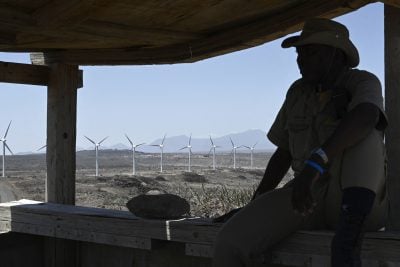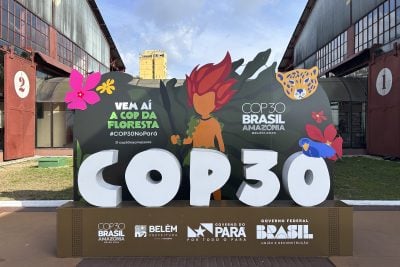The Ruto administration has set an ambitious new agenda for what you want to achieve in energy. What are your priorities?
Davis Chirchir: The global market today is driven by competition and unless we have a price that is competitive, we will lose opportunities to our neighbours in the region. We all need to use more renewable and green energy because of climate change. We shouldn’t be talking about mitigation because we should have seen this coming, but I was reviewing the energy mix in our grid a few days ago and in Kenya, fortunately we are at about 94% renewable energy. We are very strong in geothermal, in wind energy and also in hydro.
The challenge of mitigation doesn’t have as much of an impact on us as it does on some of the more developed economies, which were built largely on a fossil or coal-based energy mix.
We have just come into government and we are very keen to achieve our target, as promised to the world, that in energy generation, Kenya will be carbon-neutral by 2030. We will ensure that we phase out all fossil-based energy generation. But we want to work on the cost of energy so we can attract the global funds to set up base in Kenya and help grow our economy, create employment opportunities and basically help increase access to power, which is currently at about 35%.
Does leading on renewables go hand-in-hand with being able to reduce prices?
We have been doing geothermal for a while now and we dispatch our geothermal to the grid at between 6.5 and about 8 cents today, which constitutes about 50% of our generation mix.
What has been hurting us is the effects of climate change on our capacity to generate hydro power, which is dispatched to the grid at about 3 cents and accounts for about 33% of our energy. Unfortunately, it has generally been very poor over the last five years as a result of climate change and that has had a significant impact on our ability to dispatch hydro, our best-priced energy source.
So we have to rely more on geothermal sources, which are very expensive to develop. It costs about $3m per MW but because we have significantly derisked our fields, even with the economics of development and generation, we are able to sign power purchasing agreements with independent power producers or with our generator company KenGen at between 6.5 and 7 cents. So we are focused on bringing down costs. The price of solar panels has come down significantly. As we go forward because of technological advances in terms of panels, our capacity for wind masts and solar panels is [good] and we are in the right place at the right time. We will work closely with the regulator so we continue to dispatch the best price source to the grid.
Read more about energy in Kenya
- Geothermal race heats up Africa
- Kenya bets on renewables in hydro and geothermal push
- KenGen targets East African geothermal opportunities
What more do you think you can do to ensure that the transmission sector is operating to its full potential?
The Kenyan energy sector is fairly decoupled. We have separated generation from transmission and from the offtaker. Even in terms of the social distribution of power to our homes, we have a company called the Rural Electrification and Renewable Energy Corporation, which is basically a government body that is being funded to serve what is called the last mile. The last mile can be expensive – it was this corporation that we used to move energy access from 25 to 35%. With this decoupling, we are now able to focus on transmission, which is fully funded by the national exchequer to get the right price of power.
But the 2019 Energy Act provides a fairly good way forward in terms of development: new regulations, which will be going to parliament shortly, will bring in more private partnerships and private investors so we can develop our transmission lines, accelerate transmission and take the power to the load centres and therefore reduce the burden on the Kenya Electricity Transmission Company (Ketraco).
Even though we have a decoupled energy sector, there is a bit of transmission that is handled by Kenya Power, worth about Ksh20bn [$140m], that we are removing from Kenya Power in a structured process so that all the transmission links will eventually be with Ketraco. We are keenly working on our public-private partnership (PPP) frameworks to support future development.
Power loss is another area of challenge. Kenya Power does the last mile and more of the distribution; they are the offtaker. They buy all the power from the generators and distribute, meter, collect revenue and pay the generators. I have a position in cabinet which will seek to structure Kenya Power’s balance sheet. There are significant medium-term action plans to take Kenya Power to profitability. Kenya Power is listed on the Nairobi Securities Exchange and 49% [of Kenya Power’s ownership] is private investors through the NSE. We need to return value for these investors and therefore it imposes a task on us, as the 50.1% shareholder, to carry along our equal partner to ensure that we do have a return on investment for their money.
So you will be seeing Kenya Power bringing in some private sector governance through board restructuring that will be done to ensure that we work as equal partners.
How are you working with the East African Community (EAC) and your neighbours?
We have done quite well in the framework for power trading. Today, we are inter-connected with Ethiopia on a 2,000 MW capacity line. Over this period when we had poor hydrology we have been able, from February, to pick up some 200 MW from Ethiopia, which is 100% green because it is coming from the hydro dam there.
So that has been quite fruitful for us and with those lessons we are finishing the 400kv link between Suswa Isinya and Tororo in Uganda, which has currently reached a place called Lessos. We had a small challenge with the contractor which we are resolving. Towards Tanzania, we have got to Isinya, there is a small section where there is a challenge but that will also be resolved, and we will be able to link to Tanzania very soon, and all the way to Zambia from there. We will be able to push excess power to the region when they need that power and buy more power from a regional grid.
What does Kenya want from the Cop28 process?
The time is right for Africa to raise its voice on challenges of mitigation and adaptation.
We have to ask ourselves how can we work together to basically have equity in the way the energy systems work, so that those of us who have developed our economies do not take advantage of the African continent, which has vast resources and where [people] are trying to get to develop those resources today.
For example we have about 500m tons of coal in Kitui in the eastern part of Kenya, which we may not be able to develop, even though coal power stations would be significantly cheap. There is a good chance we may not be able to develop those resources today because of climate change, so how do we address the climate change financing equity frameworks?
How do we improve the carbon credit system so that those of us in this part of the continent can benefit more and ensure that, apart from managing the environmental challenge, we are also able to improve access to energy for our people?
We hosted the Africa Energy Forum in June. We talked together about the solutions that we need to carry forward to support energy equity and rally support for climate action.
Read more about Africa’s energy sector
Want to continue reading? Subscribe today.
You've read all your free articles for this month! Subscribe now to enjoy full access to our content.
Digital Monthly
£8.00 / month
Receive full unlimited access to our articles, opinions, podcasts and more.
Digital Yearly
£70.00 / year
Our best value offer - save £26 and gain access to all of our digital content for an entire year!

 Sign in with Google
Sign in with Google 



